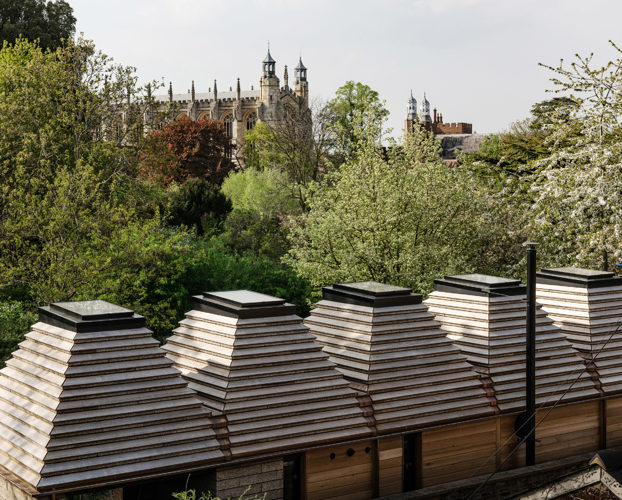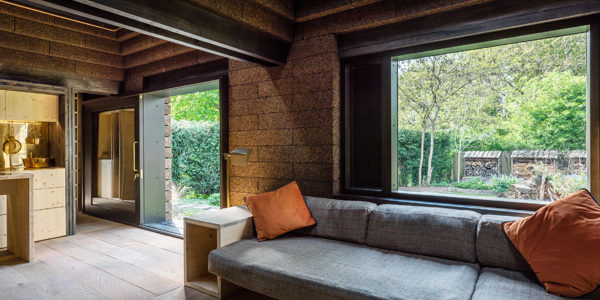Recyclable house is built from corks
Matthew Barnett Howland with Dido Milne and Oliver Wilton have used cork blocks to build Cork House in Berkshire.
The dwelling was designed by Howland, Milne and Wilton in response to the architecture industry's impact on biodiversity, greenhouse gas emissions and reliance on single-use materials.
The house comprises five volumes topped by pyramid-like skylights, and is constructed from sustainability-sourced cork blocks supported by timber components. It is designed so that in the future, it can be easily dismantled, reused or recycled.
"The Cork House is an innovative and thought-provoking response to pressing questions about the materials that we build with," explained Howland, Milne and Wilton.
"Rather than the typical complex, layered building envelope incorporating an array of building materials, products and specialist sub-systems, the Cork House is an attempt to make solid walls and roof from a single bio-renewable material."

Cork House is the latest development in an ongoing research project by Howland in collaboration with Bartlett School of Architecture, the University of Bath, Amorim UK and Ty-Mawr. Since 2014, the team has been developing a sustainable construction system that depends on cork – a renewable, resistant and insulating material that is sustainably harvested from the bark of the cork oak tree.
The system relies on expanded cork blocks, which are made from cork granules heated to form a solid building material. These blocks are then cut with interlocking joints to form a 'lego-like' modular kit of parts that can be used to self-build solid walls.
Supported by engineered timber, this system negates the need for mortar or glue, and provides structure, insulation, external surface and internal finish making it an easily recyclable and reusable structure.

The construction system was first used in 2017 to build a prototype building called Cork Cabin before it was developed far enough to build Cork House.
The dwelling is made from 1,286 cork blocks, which are combined to form five linked volumes with a distinctive roof composed of five pyramid-shaped light wells. These are designed by the studios to span the open-plan interiors and bring in light, while ensuring they can also be easily built and disassembled by hand.
Inside, it has an open plan kitchen and dining area, which leads into a living area and bedroom in the space beyond. The fifth volume hosts an outdoor decking area that is designed to 'act as both an antechamber to the house and a gateway between two gardens'.
The interiors of Cork House are also characterised by the solid cork blocks, as no finishes or other treatments are applied. Instead, the cork is dressed structural beams, lintels, windows and doors made from black-stained Accoya wood teamed with solid brass fittings.
The floorboards are made from cross-sawn solid oak, handmade stools are made from English pippy oak and the remaining bespoke furniture uses cross-laminated spruce.

Howland, Milne and Wilton, as part of their ongoing research, are intending to develop the cork system further to work on standardisation and moving towards a marketable cork construction kit.
This article first appeared on Dezeen
